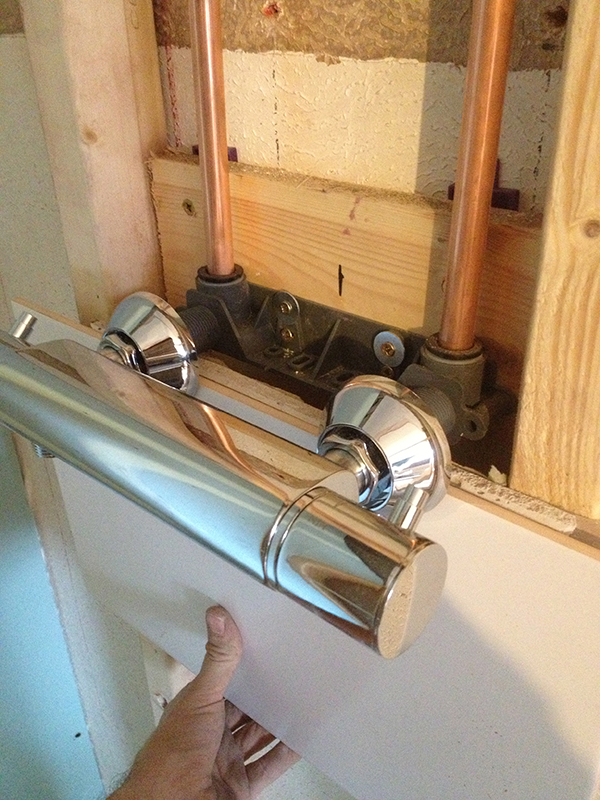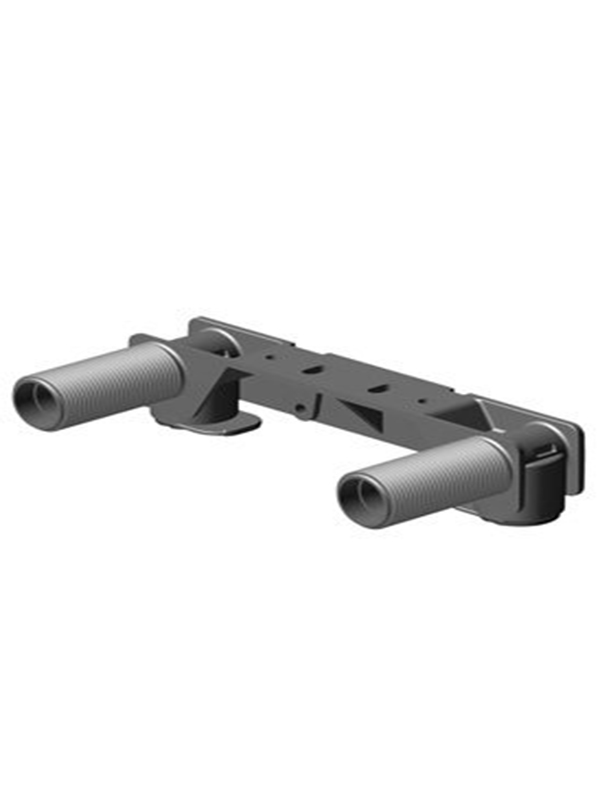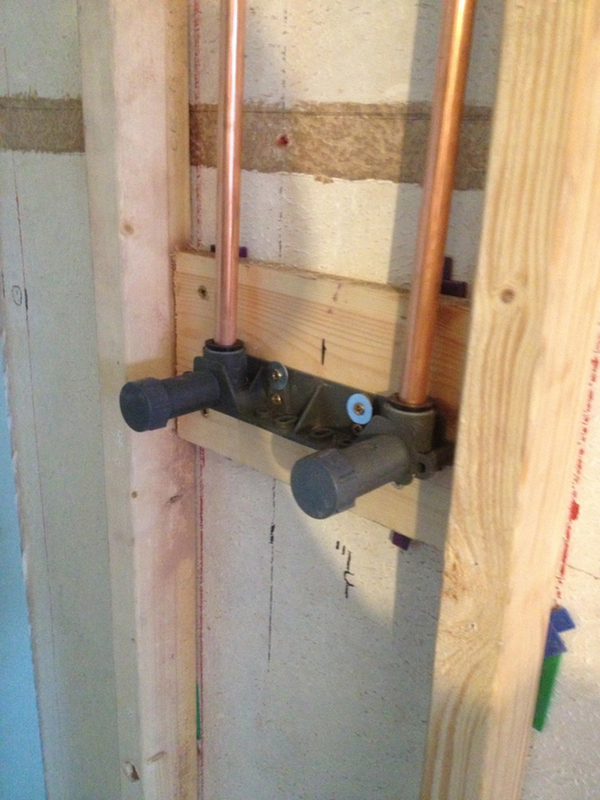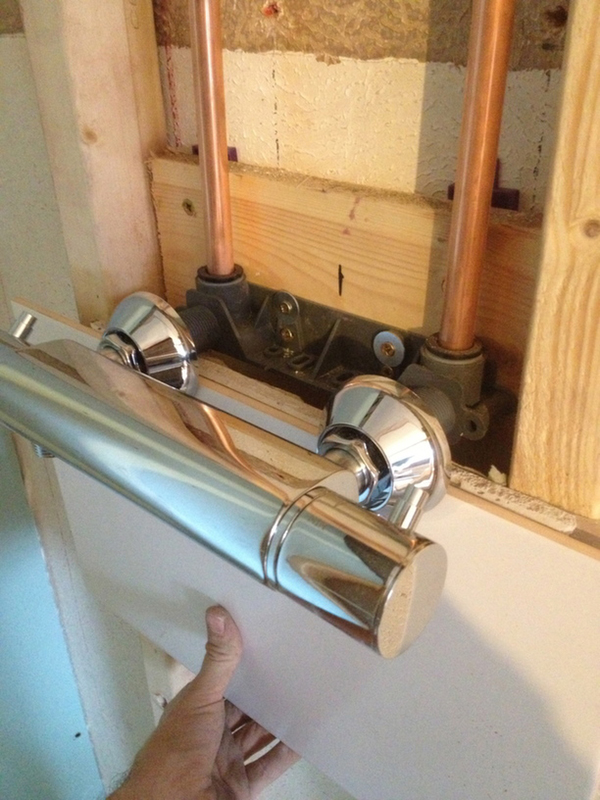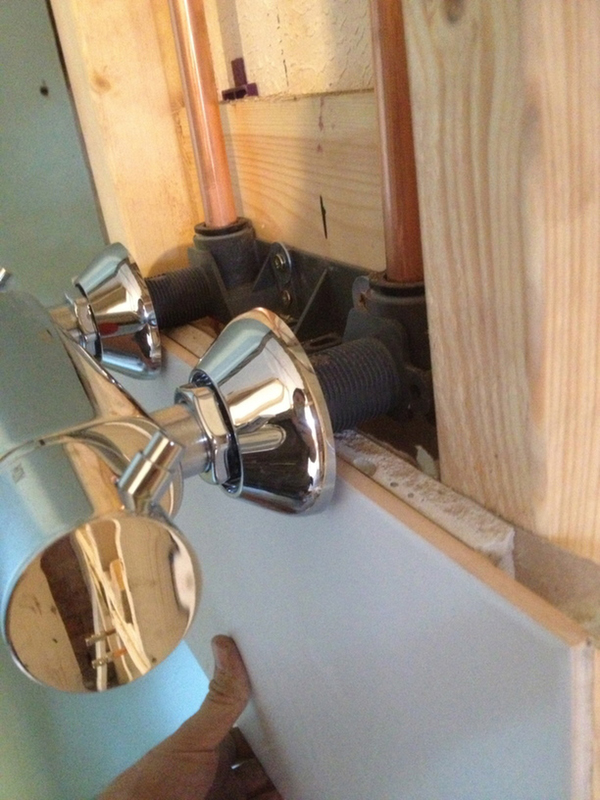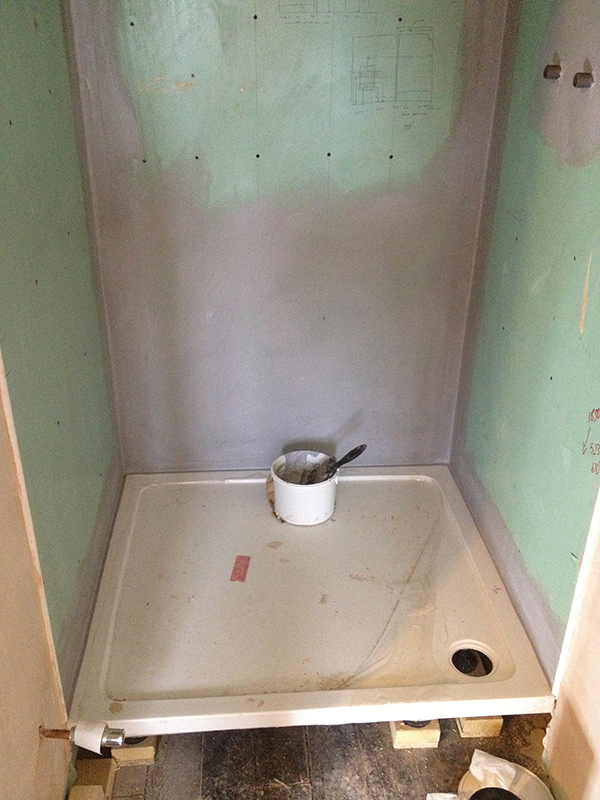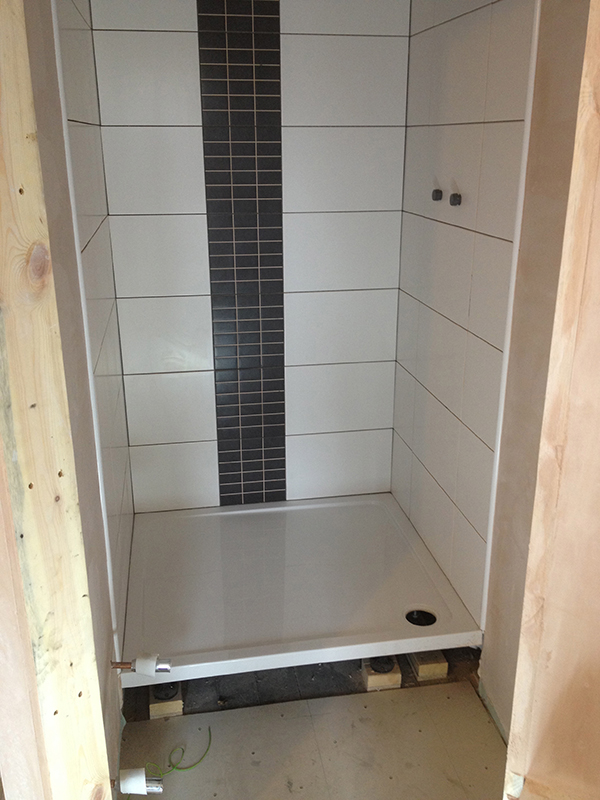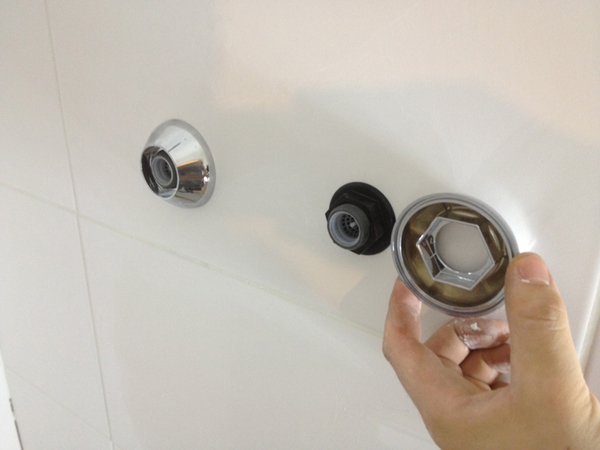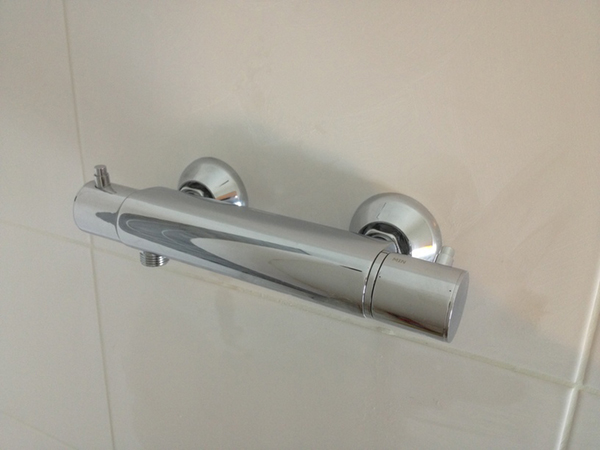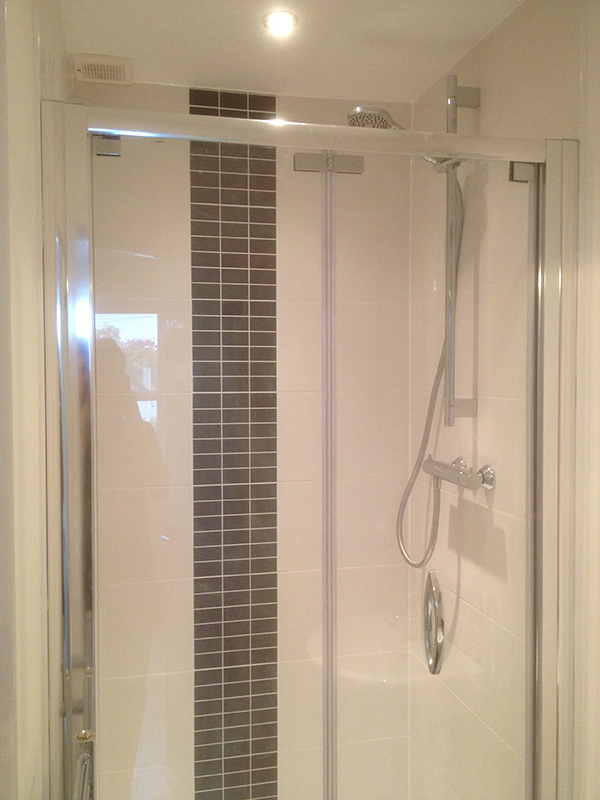This article shows you to fit a thermostatic mixer shower with a simple pushfit bracket that can be installed at 1st fix plumbing i.e. before tiling.
This product (and those like it) allow you to fix all the necessary pipework for any standard bar mixer shower valve (with150mm centres) at 1st fix stage.
After tiling, all you need to do is screw on the shower valve to the exposed threads.
There are a couple of variations but all have the same basic features of:
- a backplate that you screw to the wall for strength.
- 2 x 15mm inlets for the hot & cold water supplies into the valve (this one features pushfit connections) that can face up or down depending on where the supply pipes come from (above or below).
- 2 x ¾” male threaded outlets at 150mm centres (which you screw the shower valve onto).
- chrome cover caps to hide the point at which these threaded outlets stick out of the wall.
For:
- Allows all pipework to be fitted at 1st fix stage making 2nd fix very easy to do with minimal tools (only a spanner).
- Provides a very secure fitting for you shower valve as it attaches it securely to the wall.
- Ensures perfect aligned (150mm centres) pipework so you know the shower valve will screw straight on at 2nd fix (some 2nd fix shower fitting kits rely on very accurate 1st fixing of pipework, and if the pipe centres are slightly out, then the shower valve will not attach.
- Easy push fit connections allow for a quick installation with no compression or solder joints.
- Simple, straight forward design without lots of little fiddly bits to get lost.
- Around £35+
- Easy levelling adjustment made when screwing the bracket to the wall initially with the use of a small spirit level.
- Suitable for most stud wall installations, or where a wall needs to be studded out regardless of the shower fixing method e.g. in this case study where the whole wall was studded out to conceal waste pipes etc.
Against:
- Care needs to be taken at 1st fix plumbing to ensure that the bracket is set at the correct depth with the male threads protruding far enough out of the wall to allow the shower valve to screw on correctly (see below).
- Not suitable for solid wall installations unless the wall can be studded out as below:
- Plastic construction of this particular bracket is not as strong as metal alternatives.
- Not all plumbers like pushfit connections but in my experience they do not develop a leak over time or suffer from very slow leaks as compression fittings can – if it leaks you will know about it when you 1st test it!
Fitting process
Unlike 2nd fix shower fitting kits such as this, this and this this bracket is installed at 1st fix (before tiling).
The main body of the bracket and the supply (hot & cold) pipes that feed it are positioned behind the finished wall surface as can be seen above.
In this instance the hot and cold pipework drops down to the bracket (but it can be rotated if the pipes come up from the floor) and is connected with 2 x standard pushfit connections.
PS Please see here for a compression version of the same valve.
These connections must be thoroughly checked for leaks before the pipework is entombed behind the shower wall.
This is done by putting the valve under pressure by turning the water on and capping the shower end of the bracket – this is done with the stop caps supplied (as in the picture above) or with the shower valve itself.
It is vital to ensure that the bracket is positioned square to the finished wall surface, level & set back from the tiled surface by an appropriate amount (see the box below for why).
In the picture above you can see that I have screwed a piece of wood to the wall behind the bracket in order to set it at the correct depth. I have also used plastic packers to make micro-adjustments to ensure the bracket is level & square to the finished wall surface.
Before boarding out the whole wall, I temporarily connect the shower valve to the bracket and use an offcut of plasterboard and a wall tile to check whether the bracket is set at the correct distance back from the wall (you will have to estimate 2-3mm for the depth of the tile adhesive here).
Setting the depth of the bracket – WARNING
At this stage it is vitally important that the threads protrude far enough out beyond the surface of the tiles so that the chrome cover caps and the shower valve can be screwed on and nipped up tight before bottoming out.If the valve is set too far forward it is not usually the end of the world as the threads may be a bit on show, but if it is set too far back into the wall, then the shower valve may collide with the chrome collars before it has tightened up sufficiently to form a watertight seal. This will make it constantly leak, unless you forego the chrome collars.Please see here for an example (mid way through this article in the box).
Back to the case study…..
The bathroom walls are then boarded and tanked prior to tiling.
Once the wall is tiled and grouted, the 2 x ¾” male threads of the bracket will protrude through the tiles as shown above. PS See here for how to cut the holes in the tiles for this.
The holes around the male threads are filled with silicon sealant to form a waterproof barrier to mitigate against the risks of water penetration behind the tiles.
These chrome collars attach in a slightly different manner than most other concealed shower brackets in that plastic nuts are first screwed onto the threads before the chrome collars are slid over them.
They are held in place by friction, and are therefor more likely to come loose than with collars that screw onto the thread directly, but they are designed in such a way that they obstruct the view of the exposed thread (which is normally left exposed with other concealed shower brackets).
This bracket also has a filter that you can see inside the male thread of the bracket.
The water supply is turned off, and the shower valve is screwed onto the exposed threads with a spanner, and a rubber washer forms a watertight seal. Be careful with the spanner on the chrome so as not to scratch it.
The 2 x male ¾” threads which the shower valve attaches onto are plastic on this model, so there is a small chance of the threads stripping if the metal threads of the shower valve nuts are overtightened – When attaching the shower valve just nip up the connections until the rubber washer grips.
PS Before attaching the shower valve, make sure that the pipework is thoroughly flushed through to stop any flux or solder clogging up the filters in the new shower valve.
Once the shower valve is attached to the bracket, screw the shower head onto the hose and then the other end of the hose onto the underside of the shower valve (one end of the hose is usually tapered to fit in the hose holder that attaches to the riser rail.)
Attach the (now connected) shower head to the riser rail and then mark the position on the wall where you want the riser rail to go, taking the height of the intended users into account.
Doing the work this way round will ensure that you don’t accidentally attach the riser rail too high on the wall for the shower hose to reach.
Drill and attach the riser rail, turn the water on and check for leaks at all junctions and nip up with a spanner if required.
Thanks for reading, leave me a comment if you have any questions.
Chris

